You may have heard of the ‘nuclear fuel cycle’ and its attendant ideas:
“Oil and coal cannot be used more than once, but uranium can be recycled.”
“If spent nuclear fuel is reprocessed repeatedly, uranium resources can be utilized dozens of times.”
‘The nuclear fuel cycle’ has been advertised by power companies as above. The FEPC (Federation of Electric Power Companies) first announced its nuclear fuel cycle plant plan in 1984.
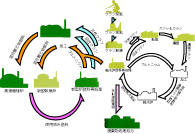 Fig. 1 is their original nuclear fuel cycle plan (you can enlarge the image by clicking on it). The right side of it shows the ordinary cycle that revolves around a nuclear power plant: from uranium mining, enrichment, and processing, to nuclear power plant operation, and on to reprocessing of spent fuel, and the reuse of uranium. In the other cycle shown on the left side, plutonium recovered from spent nuclear fuel is mixed with uranium in a fast-breeder reactor, creating more plutonium. Uranium is then recovered from the spent fast breeder fuel and is reprocessed and recycled with the plutonium. The whole cycle is called ‘the nuclear fuel cycle’. Under this plan, two fast-breeder reactors were constructed (“Monju” in Tsuruga city, Fukui prefecture, and “Joyo” in Oarai-machi, Ibaragi prefecture). However, countries such as France and Germany promoted this idea earlier than Japan only to abandon it, one after another, because of structural difficulties in the fast-breeder reactor. In Japan, the operation of the fast-breeder reactor Monju was suspended in 1995 due to a sodium leak and fire accident that occurred shortly after reactor operations commenced. In January 2003, the Nogoya High Court ruled that the original license granted for Monju was illegal! Therefore, there is no future prospects for the cycle on the left side of Fig. 1 for this plant.
Fig. 1 is their original nuclear fuel cycle plan (you can enlarge the image by clicking on it). The right side of it shows the ordinary cycle that revolves around a nuclear power plant: from uranium mining, enrichment, and processing, to nuclear power plant operation, and on to reprocessing of spent fuel, and the reuse of uranium. In the other cycle shown on the left side, plutonium recovered from spent nuclear fuel is mixed with uranium in a fast-breeder reactor, creating more plutonium. Uranium is then recovered from the spent fast breeder fuel and is reprocessed and recycled with the plutonium. The whole cycle is called ‘the nuclear fuel cycle’. Under this plan, two fast-breeder reactors were constructed (“Monju” in Tsuruga city, Fukui prefecture, and “Joyo” in Oarai-machi, Ibaragi prefecture). However, countries such as France and Germany promoted this idea earlier than Japan only to abandon it, one after another, because of structural difficulties in the fast-breeder reactor. In Japan, the operation of the fast-breeder reactor Monju was suspended in 1995 due to a sodium leak and fire accident that occurred shortly after reactor operations commenced. In January 2003, the Nogoya High Court ruled that the original license granted for Monju was illegal! Therefore, there is no future prospects for the cycle on the left side of Fig. 1 for this plant.
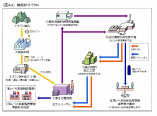 Fig. 2 (you can enlarge the image by clicking it) is an illustration of the nuclear fuel cycle from a brochure titled “Energy for 6,000,000,000 people and the Global Environment”, distributed to high school students by the Energy and Environment Educational Centre (authorised by the Agency for Natural Resources under the Ministry of Economy, Trade and Industry). This illustration which was printed in 2002, contains only the right side of Fig. 1; the left side of Fig. 1 (The cycle that revolves around the fast-breeder reactor) had gone missing!! This illustration seems to indicate that the fuel ‘cycles’, but in fact it does not ‘cycle’. As shown in Fig. 2, the spent fuel from a nuclear power plant is transferred to a reprocessing plant where plutonium is recovered. This recovery plutonium was originally planned for use in fast-breeder reactors (Fig. 1). But because this cycle plan failed, the plutonium ended up having no place to go. As a solution to this problem, a new plan called the ‘Pluthermal Project’ was introduced (‘pluthermal’ is a Japanese word made of two English words, ‘plutonium’ and ‘thermal’). This plan envisages mixing recovered plutonium with recovered uranium and fissioning this MOX fuel in light water nuclear reactors originally designed to fission uranium.
Fig. 2 (you can enlarge the image by clicking it) is an illustration of the nuclear fuel cycle from a brochure titled “Energy for 6,000,000,000 people and the Global Environment”, distributed to high school students by the Energy and Environment Educational Centre (authorised by the Agency for Natural Resources under the Ministry of Economy, Trade and Industry). This illustration which was printed in 2002, contains only the right side of Fig. 1; the left side of Fig. 1 (The cycle that revolves around the fast-breeder reactor) had gone missing!! This illustration seems to indicate that the fuel ‘cycles’, but in fact it does not ‘cycle’. As shown in Fig. 2, the spent fuel from a nuclear power plant is transferred to a reprocessing plant where plutonium is recovered. This recovery plutonium was originally planned for use in fast-breeder reactors (Fig. 1). But because this cycle plan failed, the plutonium ended up having no place to go. As a solution to this problem, a new plan called the ‘Pluthermal Project’ was introduced (‘pluthermal’ is a Japanese word made of two English words, ‘plutonium’ and ‘thermal’). This plan envisages mixing recovered plutonium with recovered uranium and fissioning this MOX fuel in light water nuclear reactors originally designed to fission uranium.
This project however has met local opposition as it has safety and economic problems. At the moment the ‘Pluthermal Project’ plans are too impractical to put into practice. Moreover, even if MOX fuel can be burnt, there is no existing plan for building a plant to reprocess spent MOX fuel. Fig. 2 cannot include the picture of reprocessing or reuse after pluthermal; thus, the nuclear fuel cycle cannot in fact be a cycle. Nevertheless, the classroom teaching materials say “The principle of Japan’s nuclear fuel cycle plan is to recycle fuel by reprocessing it so that we can use our uranium resources effectively”.
One of the biggest problems in the process of reusing nuclear fuel is the reprocessing plant. As explained in High Level Radioactive Waste, a reprocessing plant chemically processes spent fuel from nuclear power plants to separate fission products (High Activity Waste), and extracts plutonium produced by nuclear reaction with the remaining uranium. Spent nuclear fuel is an extremely radioactive material which also emits a lot of heat. It is also very dangerous to all forms of life. However, not a single school textbook and none of the government supplied teaching material describes the mechanics of reprocessing or its problems.
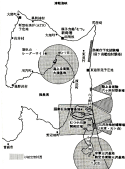 Japan’s reprocessing plant is being constructed in Rokkasho-mura (Shimokita Peninsula, Aomori prefecture). As shown in Fig. 3 (you can enlarge the image by clicking it), Rokkasho-mura is bounded by the American Air Base in Misawa, the Japan Air Self-Defence Force Base, the Self-Defence Force Shooting Range, and the Japan Maritime Self-Defence Force Base. There have been aircraft accidents and accidental bombings in this area; the location of the reprocessing plant is clearly unsuitable considering the risk of such accidents.
Japan’s reprocessing plant is being constructed in Rokkasho-mura (Shimokita Peninsula, Aomori prefecture). As shown in Fig. 3 (you can enlarge the image by clicking it), Rokkasho-mura is bounded by the American Air Base in Misawa, the Japan Air Self-Defence Force Base, the Self-Defence Force Shooting Range, and the Japan Maritime Self-Defence Force Base. There have been aircraft accidents and accidental bombings in this area; the location of the reprocessing plant is clearly unsuitable considering the risk of such accidents.
Spent nuclear fuel from all nuclear power plants in Japan is transported all the way to the Shimokita Peninsula by ships and trucks after being cooled in each nuclear power plant for at least a year. The accident risk while transporting these primary hazardous materials can not be ignored.
Rokkasho-mura has the world largest cooling pool (Fig. 4). Spent nuclear fuel transported to the reprocessing plant is stored here and it is ultimately expected to hold 3000 tons of spent fuel.
The process of reprocessing starts with chopping fuel rods (zirconium alloy sheaths each containing a pellet) into several centimeter lengths. During this process, volatile radioactivity is emitted from the fuel (Table 1). Chopped fuel rods are dissolved in a nitric acid solution in a dissolver. Spent nuclear fuel contains insoluble metals that do not dissolve easily even though a heated nitric acid solution is used. This insoluble slag is highly radioactive and exothermic and can be the cause of accidents. This material caused the Windscale (now Sellafield) Reprocessing Plant accident in 1973.
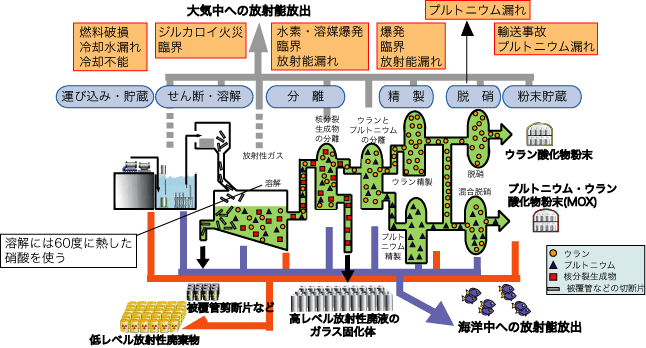
Fig.4 The reprocessing process and possible accidents. The illustration shows accidents that have actually happened in each of the processes.
Plutonium is the biggest problem in reprocessing. Plutonium is highly carcinogenetic; inhalation of just a few dozen micrograms (1 microgram = 1/1000 milligram) results in a 100% ocurrance of lung cancer in humans. Plutonium is also highly explosive and is used as the raw material for atomic bombs. Every year 10 tons of plutonium is transported to the reprocessing plant, and 50 kg of plutonium is expected to be handled every day. Handling such a large amount of plutonium may cause problems with criticality safety controls. Radioactive plutonium can start a nuclear fission chain reaction with neutrons from cosmic rays or from neutrons caused by its own radioactive decay and this may lead to a nuclear explosion. Therefore, great efforts and costs are required to control the consistency of plutonium and prevent criticality from occurring.
There are dangers of fires and explosions in reprocessing plants due to the use of the large quantities of organic solvents. If an accident happened in a reprocessing plant, the damage would be much greater than for an accident in a nuclear power plant because the amount of radioactive material assembled in a reprocessing plant is much larger. If a serious accident happened in Rokkasho-mura, the pollution would be worldwide, more catastrophic even than the Chernobyl accident.
Reprocessing plants and aircraft terrorism
Since September 11, 2001 when the New York World Trade Centre was hit by airplanes, the possibility that reprocessing plants will become terrorist targets has become more probable. An article analysing the consequences of La Hague Reprocessing Plant in France becoming a target of terrorism can be found on the Takagi School Homepage. (In Japanese)
http://www.jca.apc.org/takasas/gen/gen_01.html)
The following is a summary of the problems associated with reprocessing plants:
Reprocessing plants have risks that both nuclear plants and chemical factories have. The chances of fires or explosions are high due to the huge amount of organic material used in such plants that has a low flash point (℃). In fact, there have been fires caused by fuel rods at both Sellafield in the UK and La Hague in France.
Plutonium is dangerous because of its explosive instability and its toxicity.
If there is an accident, it will likely be a catastrophe with global consequences.
In the process of reprocessing, a large amount of radioactive material is discharged into the environment. A lot of noble gas can leak into the environment when fuel rods are chopped. A single day’s radiation discharge is estimated to be the equivalent to a typical nuclear power plant’s output for an entire year. Table 1 compares radiation discharge of a reprocessing plant and a nuclear power plant. Reprocessing plants can be fairly described as “radioactivity incontinent”.
The amount of accumulated radioactive waste increases when nuclear waste is reprocessed (Fig. 5). The amount of High Activity Waste is reduced when it is vitrified as the government and power companies say. However, the amount of Low Activity Waste at La Hague Reprocessing Plant in France is 15 times more than the original amount of waste; the amount of Low Activity Waste at Tokai Reprocessing Plant is approximately 40 times more than the original waste. The figures filed by Rokkasho-mura Reprocessing Plant show 7 times more than the original waste, but the figures sounds unrealistic comparing the actual result of Tokai Reprocessing Plant’s operation. Moreover, once the reprocessing plant becomes operational, the whole plant will become radioactive and considered radioactive waste; therefore, the total amount of radioactive waste is expected to be close to 200 times more than the original amount.
Reprocessing will lead to a huge economic loss. The estimated construction cost of the Rokkasho plant’s was 760,000,000,000 yen in 1989. The cost jumped up to 2140,000,000,000 yen when the cost was reviewed in 1999, and the construction is still underway. Moreover, once the reprocessing plant becomes operational, the demolition cost will become enormous, and the cost is expected to be 19 trillion yen. (Currently the “Nuclear Long-term Plan” is being discussed, and their agenda is the spent fuel disposal issue. Four methods of disposal have been discussed: full reprocessing, partial reprocessing, full direct disposal, and storage for the immediate future. Until now, the full reprocessing method has been promoted without any discussion of the cost ratios of these different disposal methods.
表1「再処理工場と原発の放出放射能」(年間管理値) (「下北半島六ヶ所村 核燃料サイクル施設批判」より) |
|||
| 放射能の種類 | 東海第二原発 | 東海再処理工場 | 場 六ヶ所村再処理工場* |
| 気体(希ガス) | 1400 |
89000 |
330000 |
| 気体(トリチウム) | ー |
550 |
2000 |
| 液体(トリチウム外) | 0.037 |
0.96 |
0.70 |
| 液体(トリチウム) | ー |
1900 |
18000 |
| プルトニウムなど アルファ放射体 |
ー |
0.0041 |
0.0096 |
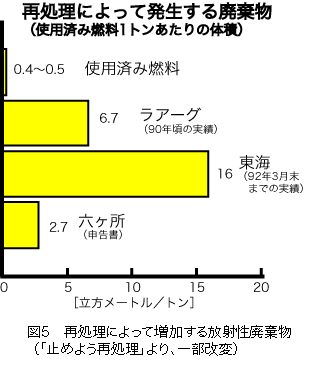 Because of the reasons mentioned above, even some exponents of nuclear energy say, “This is the last chance to review the reprocessing plan before the plant is polluted”. Asahi Newspaper reported: “The ‘nuclear fuel cycle’ is a national policy instigated by the government 40 years ago. Despite the need for its fundamental review, there is no one who can direct this issue. This is the present conditions of Japan’s rigid nuclear policy.” (Asahi Newspaper, December 10th, 2003). Despite all this, the plan is being executed at the time of writing.
Because of the reasons mentioned above, even some exponents of nuclear energy say, “This is the last chance to review the reprocessing plan before the plant is polluted”. Asahi Newspaper reported: “The ‘nuclear fuel cycle’ is a national policy instigated by the government 40 years ago. Despite the need for its fundamental review, there is no one who can direct this issue. This is the present conditions of Japan’s rigid nuclear policy.” (Asahi Newspaper, December 10th, 2003). Despite all this, the plan is being executed at the time of writing.
The following is a summary of problems with the whole nuclear fuel cycle
Every process from uranium mining to the radioactive waste processing/disposal discharges radioactive material into the environment and exposes workers to radiation (See Workers at Nuclear Power Plants). Also every process produces radioactive waste that has to be stored.
Transportation, nuclear power plant operations, reprocessing, and storage all carry an accident risk. Once such an accident or damage due to an earthquake occurs the resulting pollution may spread worldwide.
Some radioactive materials have a half-life that is longer than tens of thousands of years. If pollution spreads widely, it will threaten lives into the distant future. There is currently no way to remove such global radioactive pollution.
The nuclear fuel cylce creates huge social divides between the people who work in and live near the mines and reprocessing plants, and the areas where electricity is consumed. Economic power divides corporations with nuclear power interests that gain enormous profits, and workers who are exposed to radiation.
There is a possibility that society will be put under special security control to prevent nuclear materials from being used for nuclear weapons or for other dangerous uses. There is a possibility that our private lives will be supervised and restricted in order to prevent nuclear terrorism.
Reprocessing is problematic not only because of technological difficulties but also because of the risk of catastrophic accidents.
Reprocessing spent fuel costs much more than direct disposal.
The Tokyo Electric Power Company (TEPCO) distributes a brochure for children titled “Science Kids” and in it there is an illustration titled “Uranium fuel is an expert in recycle transformation” (Fig. 6). It is only an illustration, yet the picture of a child holding spent fuel with his bare hands is appalling. If a child was standing that close to spent fuel he would be exposed to a lethal dose of radiation, as explained in this chapter and in Mansion with No Toilet. Moreover, this illustration includes the text: “97% of uranium fuel can be recycled and used as fuel again”. Is this true?
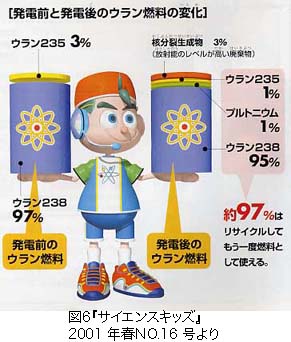 The illustration gives the indication that all but 3% of the radioactive waste from the uranium fuel can be recycled. As we know, this is not true. When a reprocessing plant extracts plutonium, the amount extracted will be only 1% of the original spent fuel. There are no immediate prospects for the plan to use extracted plutonium as MOX fuel, as mentioned above. Reprocessing requires the safekeeping of plutonium which has no use. It is neither safe nor sustainable. Reprocessing is nothing else but an enormous burden for human society.
The illustration gives the indication that all but 3% of the radioactive waste from the uranium fuel can be recycled. As we know, this is not true. When a reprocessing plant extracts plutonium, the amount extracted will be only 1% of the original spent fuel. There are no immediate prospects for the plan to use extracted plutonium as MOX fuel, as mentioned above. Reprocessing requires the safekeeping of plutonium which has no use. It is neither safe nor sustainable. Reprocessing is nothing else but an enormous burden for human society.
Until now, spent fuel from nuclear power plants in Japan has been processed mainly in the UK and France, and the reuse of recovered uranium is still under trial.
Think about the gap between this illustration and the realities mentioned earlier in this chapter.
(Translated by Noriko Matsubara)
The Japanese version of this page can be viewed here.
